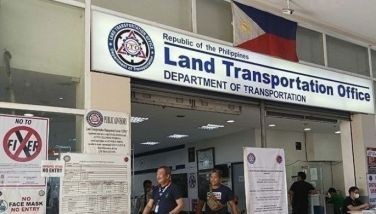Poverty level in Phl unchanged since ’06
Almost 28% of Pinoys remain poor
MANILA, Philippines - The percentage of Filipinos living below the poverty line has remained almost unchanged in the past six years, according to the latest poverty data released by the National Statistical Coordination Board (NSCB) yesterday.
The recorded poverty incidence for the first half of 2012 was 27.9 percent, slightly less than the 28.8 percent recorded in the first half of 2006, and 28.6 percent in the first half of 2009 and 2011.
The NSCB report on the 2012 first semester state of poverty in the Philippines showed that a family of five can be considered extremely poor if it is earning P5,458 a month or just enough to put food on the table.
The same family has to earn at least P7,821 if it wants to satisfy other non-food needs such as clothing.
In terms of income distribution, NSCB secretary general Jose Ramon Albert said that 20 percent of the population or the poorest segment accounts for only six percent of total national income, while the upper 20 percent accounts for nearly 50 percent of the total national income.
Poverty incidence was highest in Mindanao and lowest in the National Capital Region as well as in Regions III and IV.
The poorest are in the Autonomous Region in Muslim Mindanao (ARMM) with 46.9 percent poverty incidence, Region XII (37.5 percent), Region VIII (37.2 percent), and Region IX (36.9 percent).
Regions where poverty incidence has gone down are Caraga and Region I.
Considered the poorest provinces were Apayao, Bukidnon, Davao Oriental, Eastern Samar, Ifugao, Lanao del Sur, Lanao del Norte, Maguindanao and Masbate.
Meanwhile, Socioeconomic Planning Secretary Arsenio Balisacan said that the full year 2012 poverty survey would be released by the third quarter or in September this year.
Balisacan said an annual tracking of poverty incidence will now be done to allow the government to make the necessary tactical or short-term changes in its Philippine Development Plan 2011-2016. Poverty reports are traditionally released every three years.
“Although this first semester result on poverty incidence is not the dramatic result we wanted, we remain hopeful that, with the timely measures we are now implementing, the next rounds of poverty statistics will give much better results that will reflect the government’s massive investment in human development and poverty reduction, which understandably needs time to take full effect,†Balisacan said.
He said the problem of poverty requires a comprehensive, “multi-pronged and multi-sectoral solution†involving many stakeholders. “We are making use of the current effort to update the Philippine Development Plan to effect this solution,†he said.
“Agencies were asked to identify which projects could be implemented immediately, particularly those that would be implemented outside the NCR and across the regions. Hence, there had been many public works projects that were undertaken during the second half of 2012,†he said.
“We have to get our infrastructure program going… We can make a dent next time, the private sector has already started responding to positive developments,†he added. Infrastructure makes up only five percent of the country’s gross domestic product.
Some economists had expressed belief that the 6.6 percent economic growth in 2012 was not inclusive.
National Anti-Poverty Commission chief Joel Rocamora said he already expects raising of eyebrows especially from the “opposition,†according to an abs-cbnnews.com report.
“It’s easy to say that the government is doing a lot…but those receiving CCT (conditional cash transfer) don’t say it doesn’t have an impact on their lives. Perhaps the ones who are impatient are not the poor but the middle class,†he said.
Rocamora, in the abs-cbnnews.com report, said there is a need to tap the P70-billion coco levy funds parked in banks to spur farmers’ production. Plus interest, the fund should now be about P80 billion to P90 billion, the report said.
Balisacan agreed, noting the coconut industry’s potential in job generation. Besides the coconut industry, Balisacan sees the need to improve production of the agriculture sector, the report said.
“We need value-added activities for our farmers. We also need to spur their access to markets,†he said.
“Visible under-employment in agriculture is a persistent problem that always comes up in labor survey results. This means that agriculture sector workers work less than 40 hours a week, perhaps because there is not much demand for labor in their areas; and they are looking for additional work, possibly because the wages they receive are not enough to meet their needs,†he added.
- Latest
- Trending


























